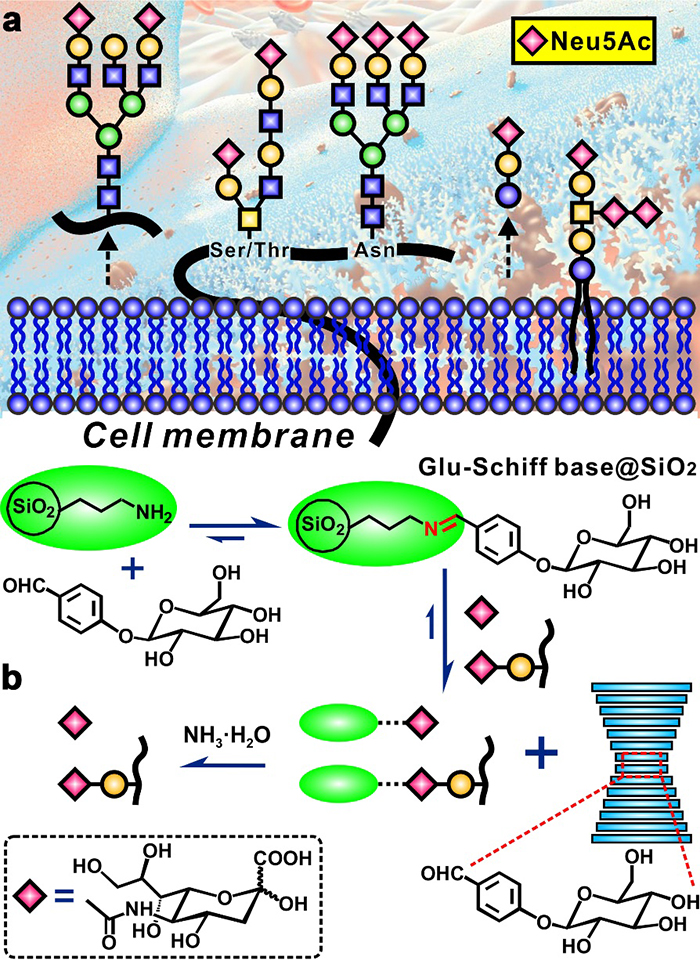Research groups led by Prof. QING Guangyan and Prof. LIANG Xinmiao from the Dalian Institute of Chemical Physics (DICP) of the Chinese Academy of Sciences, proposed a brand-new dynamic covalent chemical method of Schiff base hydrolysis to realize the precise capture of sialylated glycans. The results were published in J. Am. Chem. Soc.

Significance of sialylated glycan and the enrichment concept. (Image by XIONG Yuting)
The sialylated glycans distribute widely on the cell surface as if a layer of "glycocalyx". The outermost position and wide distribution make the sialylated glycans play vital roles in many physiological processes, such as viral infection, immune activation, cancer occurrence, development and migration.
Sialylated glycoproteins have been widely used as clinical biomarkers for various cancers. However, identification and analysis of the sialylated glycans is extremely complex and challenging, and a new and highly efficient material system is urgently needed to overcome the problems of sialylated glycan enrichment and separation in complex bio-samples and promote the comprehensive development of glycoproteomics.
Based on a strategy of dynamic covalent chemistry, the research teams achieve accurate capture of sialylated glycans. This strategy is different from the traditional static affinity strategy.
It cleverly uses the dynamic covalent chemical bonds present in Schiff base, forming a stable complex between its hydrolyzed part and the sialylated glycan. The developed material exhibits excellent enrichment selectivity for the sialylated glycopeptides, high adsorption capacity and satisfactory enrichment recovery rate, reaching a high level in the field of glycopeptide enrichment.
This provides biochemists with a novel and powerful strategy that can be used to accurately capture glycan information, which is closely related to the occurrence of cancer and immune diseases.
On the other hand, the easy hydrolysis characteristic of the material changes the researchers' knowledge, which the traditional enrichment materials need have good chemical stability.
More importantly, the researchers disclosed an interesting story hidden behind the Schiff base hydrolysis reaction, one hydrolysis product forms a stable complex with the sialylated glycan, while the other product occurs ordered self-assembly in solution, both of which remarkably promote the hydrolysis reaction.
This study shows the unique advantages of dynamic covalent chemistry in the fields of glycoproteomics and biomolecular sensing.
This work was supported by the National Natural Science Foundation of China, DICP Innovation Funding and LiaoNing Revitalization Talents Program. (Text by XIONG Yuting, QING Guangyan)